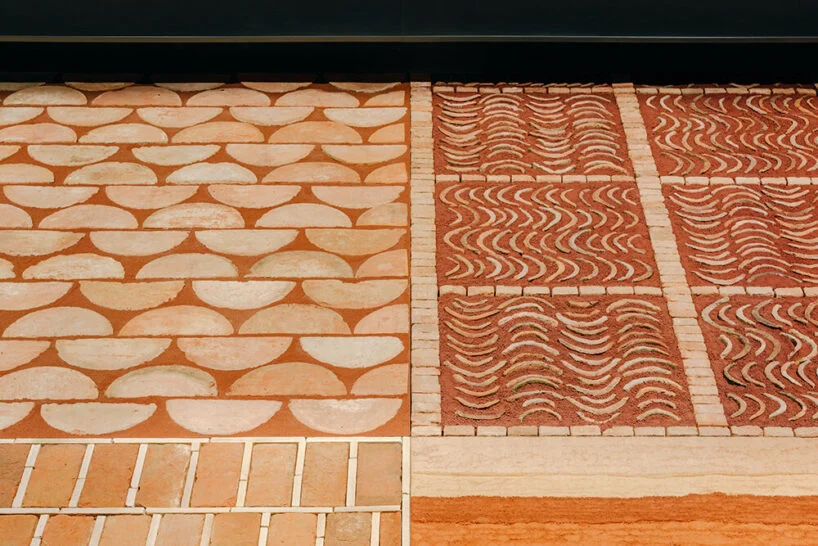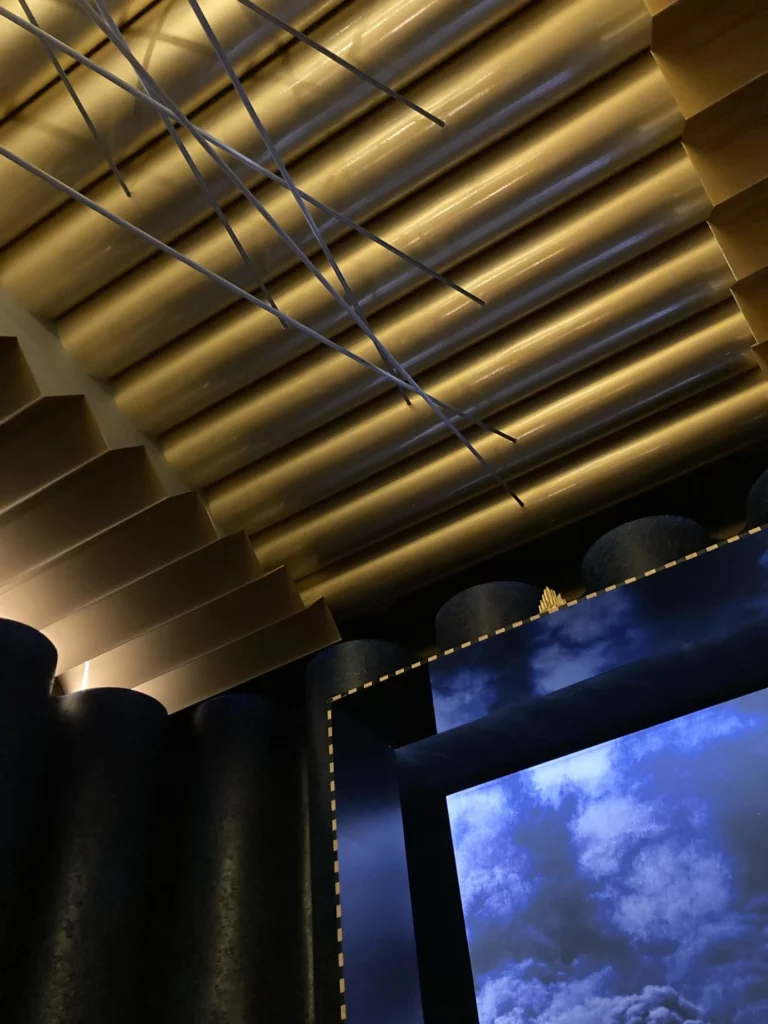Milan Design Week 2024 is a showcase of sustainable innovation and reflection, from the Hermès exhibit featuring reclaimed materials, to the David Lynch “Thinking Rooms.”
In recent years, Milan Design Week’s focus on sustainability has highlighted the global shift underway in the design world. This year, the world’s largest design festival expands on that as the world now faces more challenges than ever. Milan Design Week 2024’s theme, “Materia Natura” (“Natural Matter”) — sees its more than 1,900 exhibitors urge for a reevaluation of design’s role in societal challenges. As designers and labels look to sustainability as a guiding principle, the installations run the gamut at the event, which runs from April 16 to April 21.
French luxury label Hermès will showcase a unique installation at La Pelota venue, capturing the essence of the brand’s artisan roots through the innovative use of reclaimed materials. Designed by Hermès home artistic directors Charlotte Macaux Perelman and Alexis Fabry, the installation features a mesmerizing patterned floor that creatively uses more than twenty different organic materials, including bricks, slate, marble, and terracotta. “It’s a question of how to create a graphism, a pattern, using lots of different materials,” Perelman explained. This artistic endeavor not only highlighted Hermès’ commitment to sustainability but also subtly referenced its iconic scarves through the intricate patterns on the floor.
The sourced materials for this installation, all gathered from within an hour’s distance from Milan, were laid by hand over four weeks. “These are all reclaimed materials that we recycled; I contacted many suppliers to get these materials which already existed,” Perelman said about the meticulous sourcing process. Fabry elaborated on the philosophy behind using these reclaimed elements: “The quality and the value of the object is not just the quality of the original material but about what we do with that material, the hand that adds the workmanship to the material itself.”

In a departure from previous, more sculptural installations, this year’s design aimed to cultivate a sense of spaciousness by focusing on the ground and using minimalistic elements. “One of our initial intentions is that instead of filling space, we wanted to empty space,” Fabry said, adding a philosophical dimension to the design approach by contrasting it with the prevailing trend of excess in contemporary design.
“The intention was to show the connection with the earth, with the ground, and the connection with the legacy of Hermès,” Perelman said, highlighting the thoughtful curation that linked the new creations with older pieces.
Other notable sustainable explorations at MDW include Dropcity, which rekindles Colorado’s 1960 artistic spirit beneath Milan’s central railway tracks, blending history with modern architecture. Powered by WASP, a leader in 3D printing technology, this innovative project transforms Tunnel 54 into a vibrant research and creative hub. Throughout the event, WASP’s Crane WASP printer is pivotal, constructing multifunctional wall modules directly within the tunnel. Parallel developments include a Clay 3D Printing Farm, showcasing mass customization through uniquely designed parametric walls. This venture not only highlights architectural innovation but also promotes sustainable, automated ceramic production, redefining Milan’s architectural landscape.
Designer Robert Bronwasser introduced “Timeless is More”, showcasing innovative reimaginations of everyday objects. Emphasizing longevity over frequent replacements, Bronwasser’s exhibition challenges the norm with sustainable designs meant to last a lifetime. Key highlights include the Rebike, an e-bike designed for durability and ease of modification, and Remix, a modular kitchen setup that moves with its owner. Bronwasser’s approach is encapsulated in his statement, “The future does not need another iteration of an existing product; it calls for a new way of thinking and designing.” The exhibition underscores a shift towards sustainable innovation in design.
Also tapping sustainable angles, Stecca 3.0 in Isola transforms consumerism into a force for good with its New Store, Bravery Bar, and Kiosk of Reciprocity under the Crafting Dialogues theme. Promoting regenerative exchanges, New Store collaborates with notable entities like the International Architecture Biennale Rotterdam to foster sustainable consumption and lasting change. Lampo Milano explored ecological materials from South India crafted into wearable art by the Made in Earth Collective. “Our future remains elusive if we persist in our isolation. We believe there is hope and joy in coming together to create,” the Bangalore-based studio said, pushing the boundaries of traditional design.

Other highlights include diverse installations by HeyCrates, L’Essenziale Studio, pittimag, Jonathan Bocca, and Cavaliere Atelier, showcasing a range of innovative design concepts. These exhibitions collectively enhance the cultural and creative fabric of the Isola Design Store. The “Is One Life Enough?” exhibit at Lampo Milano challenges conventional use-and-throw culture by showcasing more than fifty design studios’ work in sustainable materials and circular design. The exhibition provokes thought on the extended potential of humans and materials alike, featuring multifunctional pieces set on recycled and organic platforms provided by Fantolino and Kineco.
Other exhibits include the submerged island in “Under the Surface”, designed and created by Accurat, Design Group Italia and Emiliano Ponzi, which explores how to use water more sustainably. Japanese designer Issey Miyake teamed up with the Dutch group We Make Carpets for a unique exhibition showcasing installations crafted from everyday items like plastic bottles and paperclips, highlighting Miyake’s commitment to sustainability and quality.
Also on display is an installation from “Twin Peaks” and “Dune” director, David Lynch. The filmmaker created two immersive “Thinking Rooms” that projected sequences from his films before passing through to enter the Salone del mobile. Lynch, a transcendental meditation devotee, created the meditative space for introspection, emphasizing personal peace.
Related on Ethos:


